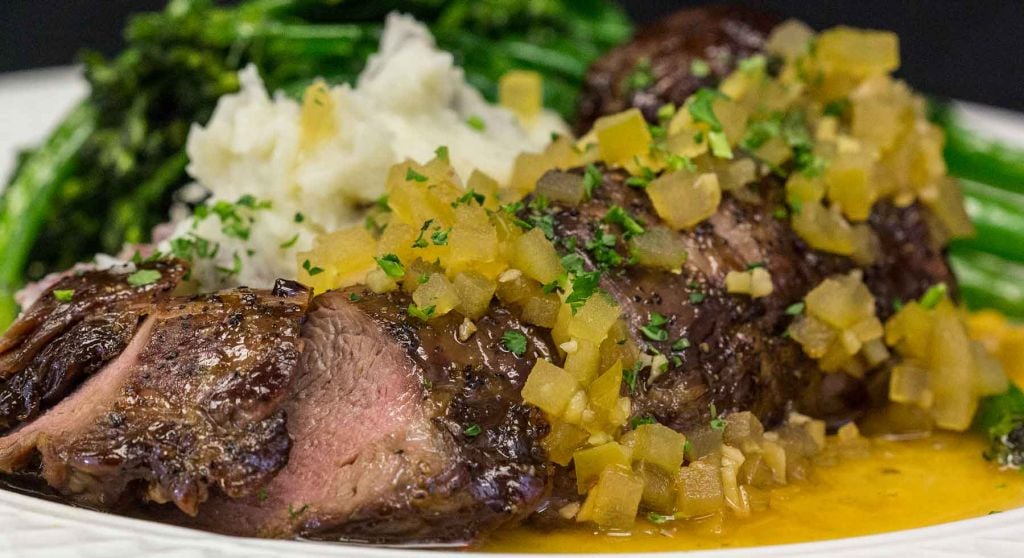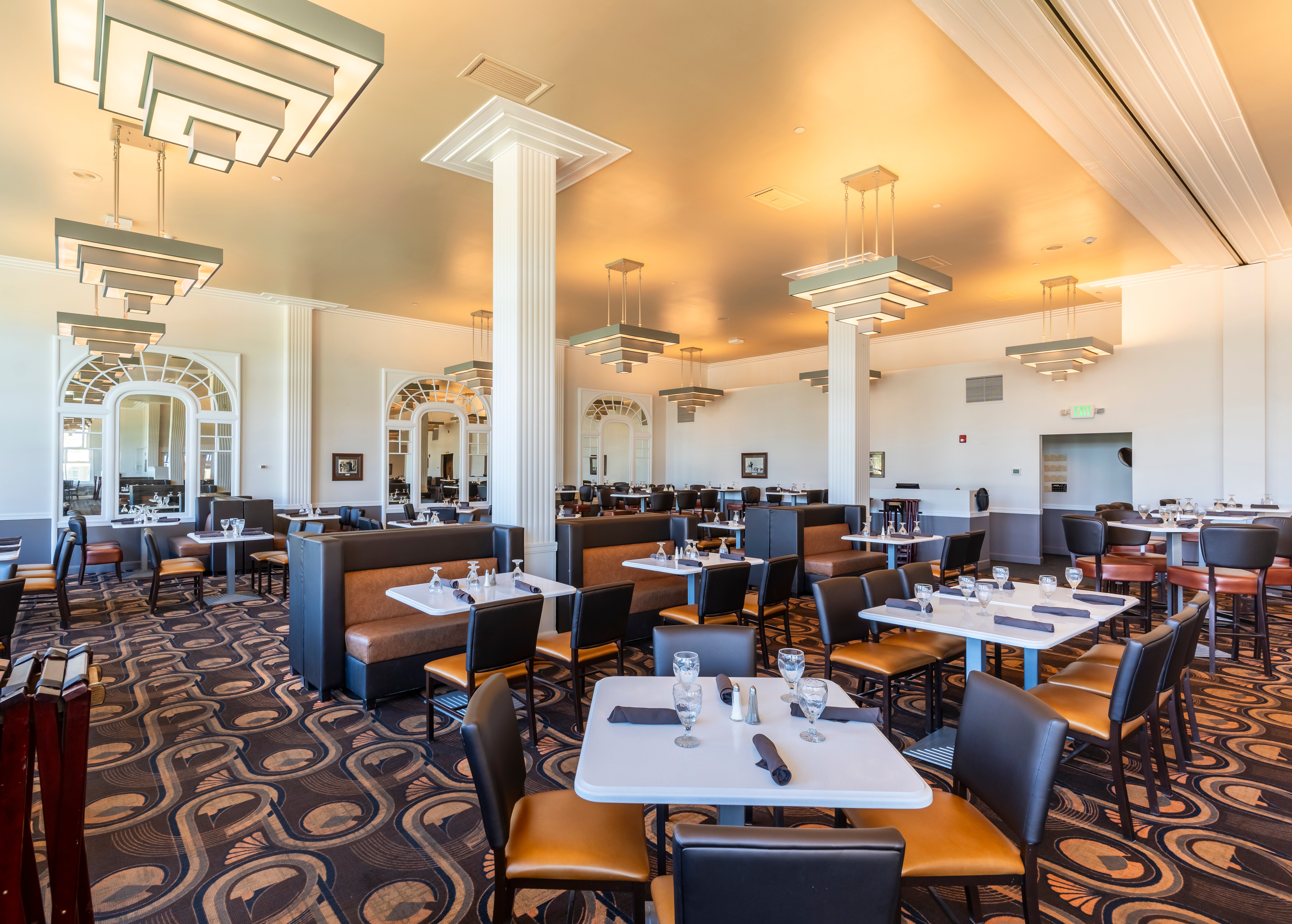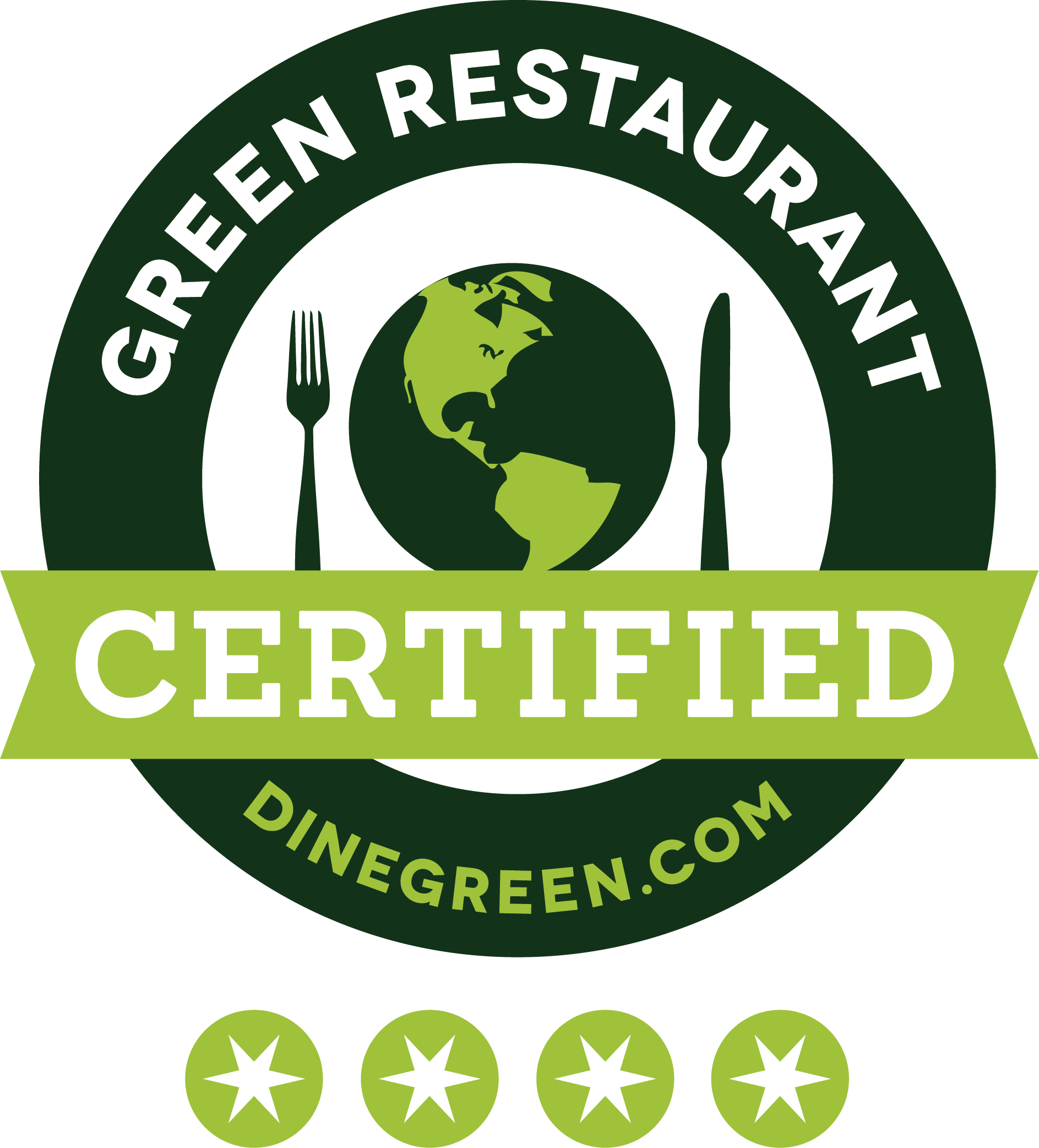Sustainable Dining in Yellowstone
Green Certified Restaurant
Trout from Idaho. Bison from Wyoming and North Dakota. Beef, soup, liquor, and ice cream from Montana. These and other regionally sourced food products served in the dining facilities of Yellowstone National Park are bringing local flavors to the culinary forefront of the nation’s oldest national park.
As the farm-to-table food movement sweeps the country, Yellowstone is embracing it with gusto and has committed to sourcing 70% of our food purchases from local and/or sustainable producers or distributers. This applies to of the park-wide food and beverage purchases for restaurants like the Mammoth Dining Room in the Mammoth Hot Springs Hotel & Cabins and other park eateries managed by concessioner Xanterra Travel Collection®. Local and/or sustainable products also include produce, meats, dairy, flour, cookies, and teas.
The park now has a variety of local beer, wine, and spirit offerings which feature products like Wyoming Whiskey, Willie’s Montana Honey Moonshine, Montana 1889 Whiskey, and Willie’s Huckleberry Sweet Cream Liqueur.
So consider that when you order dinner at the Mammoth Dining Room, you’re supporting local producers. Or, if you’re joining us for breakfast, try a breakfast of Montana Milling oatmeal, Montana Cream of the West seven-grain buttermilk pancakes, or a Wheat Montana bagel with cream cheese accompanied with Tumbleweed Teas’ Peace of the Park.
Yellowstone restaurants follow a simple philosophy — to provide the highest quality food with the “softest footprint” by finding products that are fresh, locally produced, organic, third-party certified and/or support sustainable farming, fishing, and business practices. Among their many other local food partners are Mulvey Gulch Ranch, Yellowstone Soup Company, Amaltheia Organic Dairy, and Big Dipper Ice Cream.

Yellowstone’s local and sustainable approach to food is also earning accolades. Mammoth Dining Room is Xanterra’s first officially certified green restaurant. It received its initial certification from the Green Restaurant Association (GRA) in 2011 and then, in 2016.
It became the first restaurant in a national park to receive GRA’s Four Star certification, and at the time, was one of only 25 restaurants worldwide. The certification process was intensive. In this case, it involved more than 30 Xanterra and NPS employees working through more than 100 individual process steps to document our sustainable practices and purchasing policies.
 The Green Restaurant Association is an international nonprofit organization founded in 1990 to encourage restaurants to green their operations using transparent, science-based certification standards. GRA operates in 47 states and Canada, assisting restaurants to achieve sustainability in several critical areas including energy, food, water, waste, chemicals and pollution reduction, disposables and furnishings, and building materials.
The Green Restaurant Association is an international nonprofit organization founded in 1990 to encourage restaurants to green their operations using transparent, science-based certification standards. GRA operates in 47 states and Canada, assisting restaurants to achieve sustainability in several critical areas including energy, food, water, waste, chemicals and pollution reduction, disposables and furnishings, and building materials.
Mammoth Dining Room is a stellar example. Its Four Star status was in part the result of accomplishments in these categories:
- Disposables: Disposables (cups, utensils, plates, etc.) are compostable or recyclable, with priority given to post-consumer recycled content.
- Energy: All incandescent bulbs replaced with LEDs or high-efficiency fluorescents. Use of Energy Star-rated kitchen equipment.
- Food: Ongoing commitment and program to increase the availability of fresh, local and sustainably produced food and beverage items on the menus.
- Chemical and Pollution: Electric vehicle charging station made available with preferred parking location. Environmentally friendly chemicals are used throughout the operation. Use of low/no VOC carpet, flooring and materials in the building.
- Waste: Waste is sorted to maximize recycling and divert food waste from the landfill. Waste vegetable oil is collected to be processed into bio-diesel fuels. Items such as corks, glass, metals, cardboard and other materials are recycled or reused. Waste is minimized through such practices as using bulk condiments and serving primarily draft beers.
- Water: High efficiency/Energy Star-rated fixtures and equipment are used in bathrooms and kitchen.
More information on Yellowstone National Park Lodges’ sustainability programs, initiatives and recognition can be found here.
Contributors to this article include Dylan Hoffman, Director of Sustainability for Yellowstone National Park Lodges and the former editor in chief of Smart Meetings, Christine Loomis, a Colorado-based freelance travel and lifestyle writer.
For A World of Unforgettable Experiences® available from Xanterra Travel Collection® and our sister companies, visit xanterra.com.
Want to experience Yellowstone in-depth? See what makes Yellowstone National Park a great place to work for a season or longer!